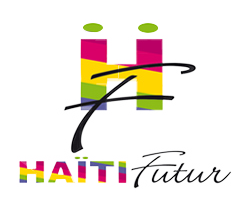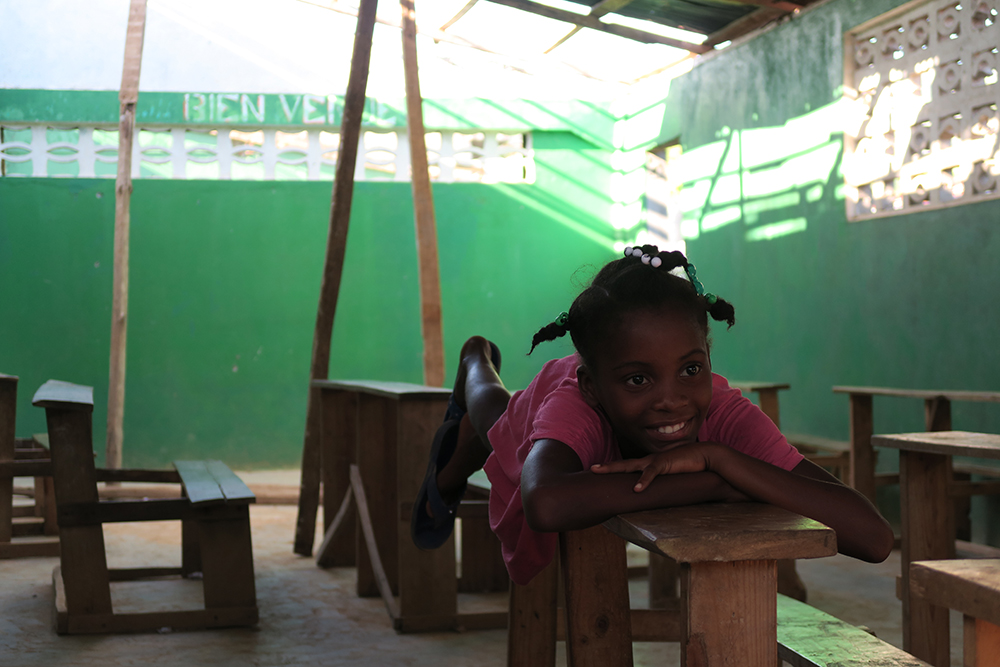Haïti Futur has made restarting school one of its main priorities during the reconstruction period after Hurricane Matthew. Why is this such an important focus?
When faced with any chaotic situation, and it is in this case, one wonders how to go about reconstruction. When all is destroyed, the habitat, the crops, the livestock, it is necessary to start with something that will influence the base of society. School is a great way to do that. Beyond teaching, school provides a structured framework. For the children who will find a setting which allows them to overcome the trauma through regular interaction with their classmates and teachers, life will resume its course …
Restarting school will also allow parents to be more available to settle their household affairs following the disaster, without having to take care of their children all day. It will also promote structured food assistance, through resuming school cafeterias in place of the often inequitable and disorganized food distribution from which the most violent individuals benefit.
School is also the place where health education interventions have the most impact. My first thoughts go to very essential prevention of cholera. These interventions can only be done at school, in a country where the habitat is very dispersed.
How do you plan to proceed? With whom ? With what means?
Across many emergency aid organizations (I prefer this word to “humanitarian”), there will soon be an influx of materials (sheets, wood, nails, cement, tools …) but there will still be missing links that Haïti Futur hopes to build as soon as possible:
– the evaluation of the work to be done,
– monitoring building sites (while paying special attention to hurricane proof construction tactics),
– the payment of labor.
Haïti Futur proposes to rehabilitate forty schools (30 for the district Camp-Perrin-Maniche and 10 Les Abricots) in the next two or three months. We hope that this example will be followed by other NGOs and partner organizations of the Ministry, so that all the damaged schools will be operational again very soon.
What criteria will be used to choose these schools, given that there are more than 150 schools in the district, most of which are more than 80% damaged?
Our criteria are not related to the type of the school (private, public, etc.) but to a realistic analysis of the situation:
1) The size and willingness to share. Schools welcoming the most children and whose directors will accept the introduction of a double shift will be favored. This double shift will allow students whose school is destroyed to come to class after the morning shift in an already reopened school.
2) The level of destruction. We will start with schools where the work to be done is the least intense so that children can return to class as quickly as possible.
3) The spatial criterion. We will ensure a well-balanced spatial dispersion so as not to disadvantage once again the most remote areas of the rural areas, “the outer-country”.
Given the scale of the damage, no one is able to solve the issue alone. Coordination and collaboration between all actors in the education sector is essential. Let’s not forget that 80% of schools in Haiti are private but they fulfill a public service mission. If we want to strengthen the governance of the state (so that this chaos does not happen again), we must work together. It is for this reason that we meet regularly with the Zone Inspector, Mr. Jolivert Pierre, to focus on the situation and to avoid a recurrence.
Concretely today, where are you?
To date, the materials are not yet available (we hope they will be in a few days). To speed up the process, we started working on schools that did not require too much material. Yohann piloted the rehabilitation of 3 classrooms at the school of Rhé using the existing sheet metal and putty. Starting tomorrow he will cover 2 other classes.
Vivens continues her detailed inventory of schools in the district to list their degree of damage (roof, frame, walls etc.). 2/3 of schools have been listed to date.
Thomas is starting to ask for quotes and to identify the foreman-roofers with whom we will be able to work and to consider the various reconstruction techniques to be implemented. It is essential not to repeat the construction errors that led to this disaster. A lesson that does not seem to have been learned in the building procedures since the earthquake.
What about the digital education program that Haiti Futur has focused on for the past six years? Has hurricane Matthew put that on hold?
Matthew has not halted any of our programs. On the contrary, it confirmed the importance of the projects that we undertake. We are continuing our work in the departments little or not affected by the hurricane. In Jacmel, Marianne, along with Notre-Dame University and Haiti Futur, organized a training from October 5th to 15th for the Faculty of Education Sciences.
But, as for work in Grand’Anse and Southern departments, we must remain realistic. We can not continue the dissemination of digital boards and training as schools are closed, equipment and energy sources damaged.
It will take time to get everything back in shape, two, three or six months depending on the case. But as the schools reopen, we will resume our program and our training because it is the future of the country that is at stake.

